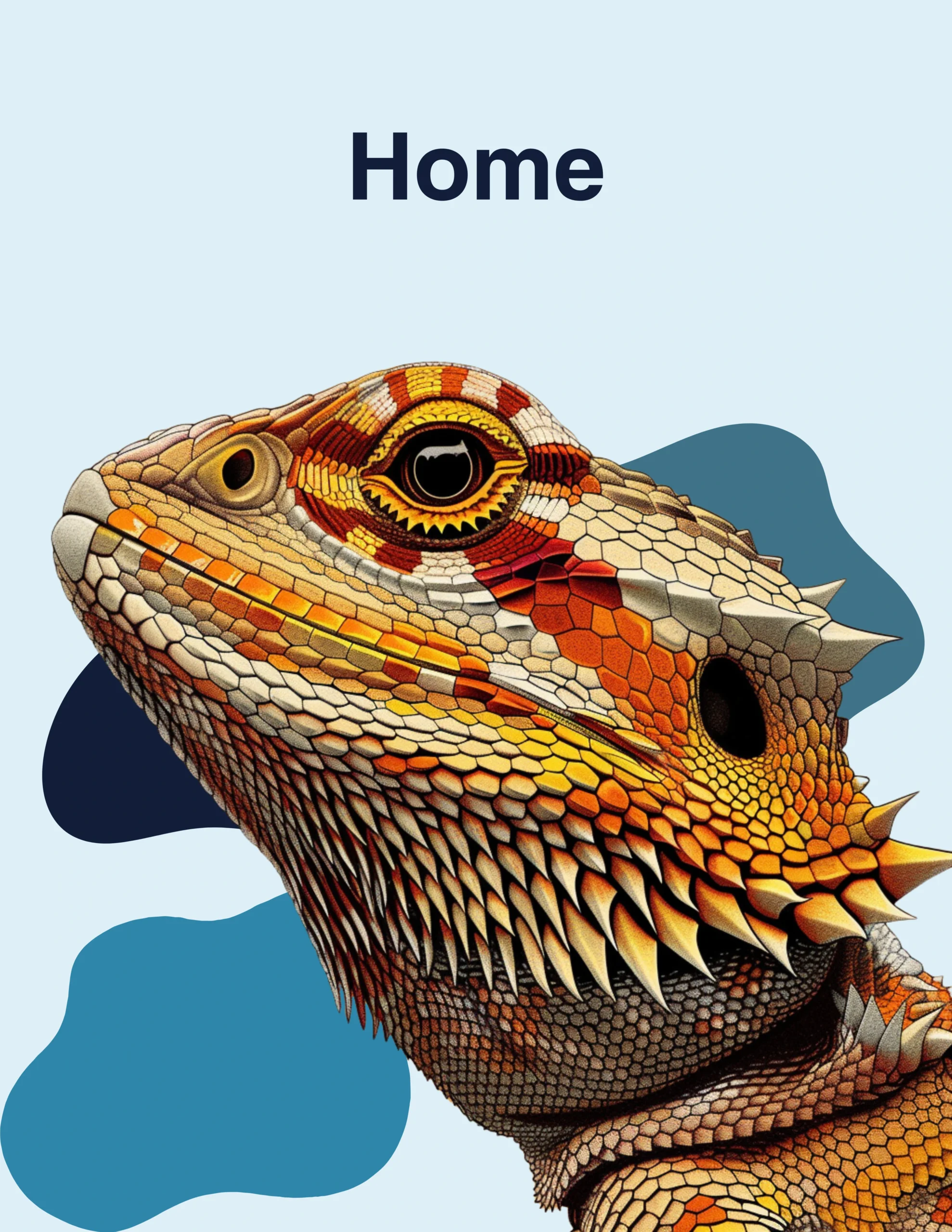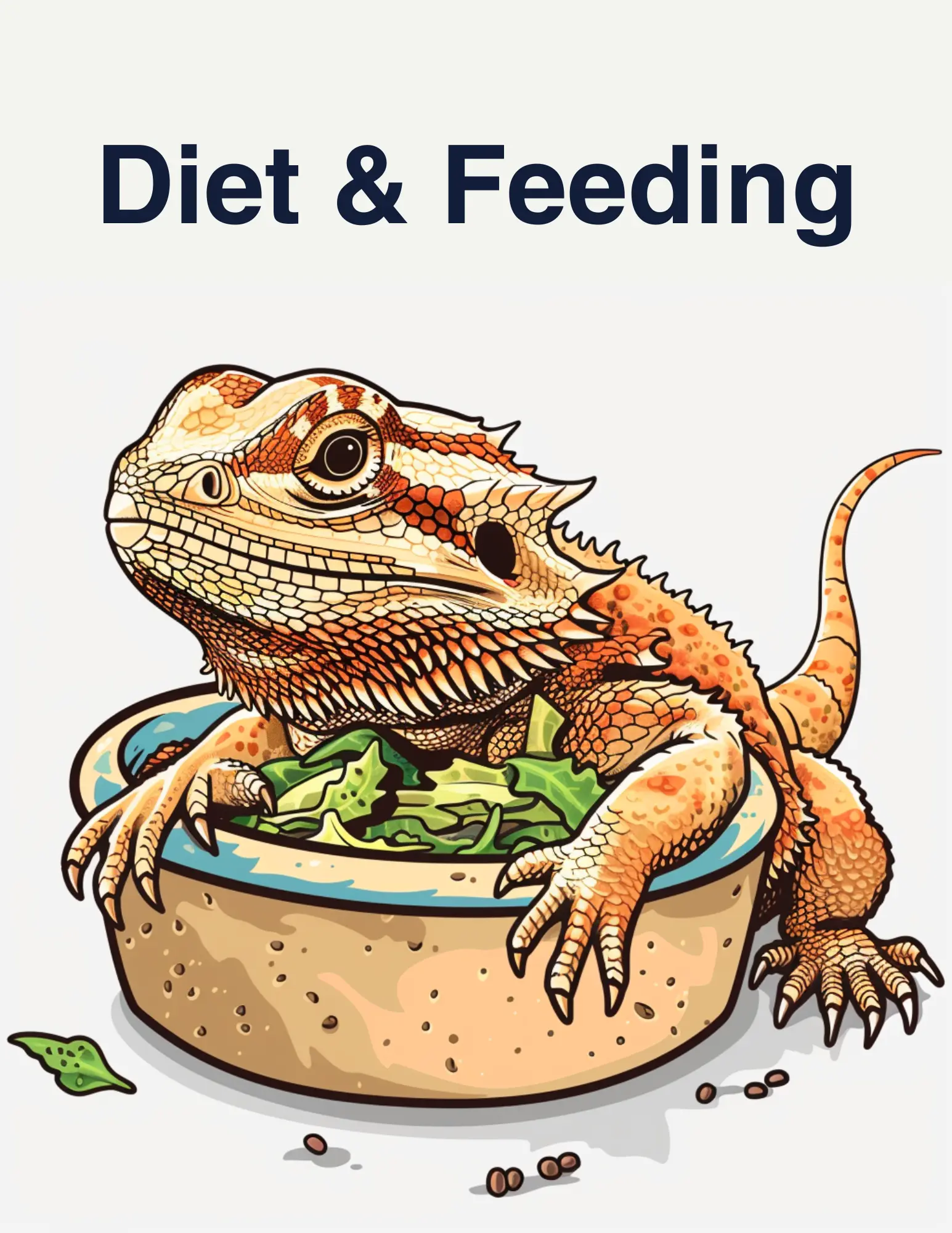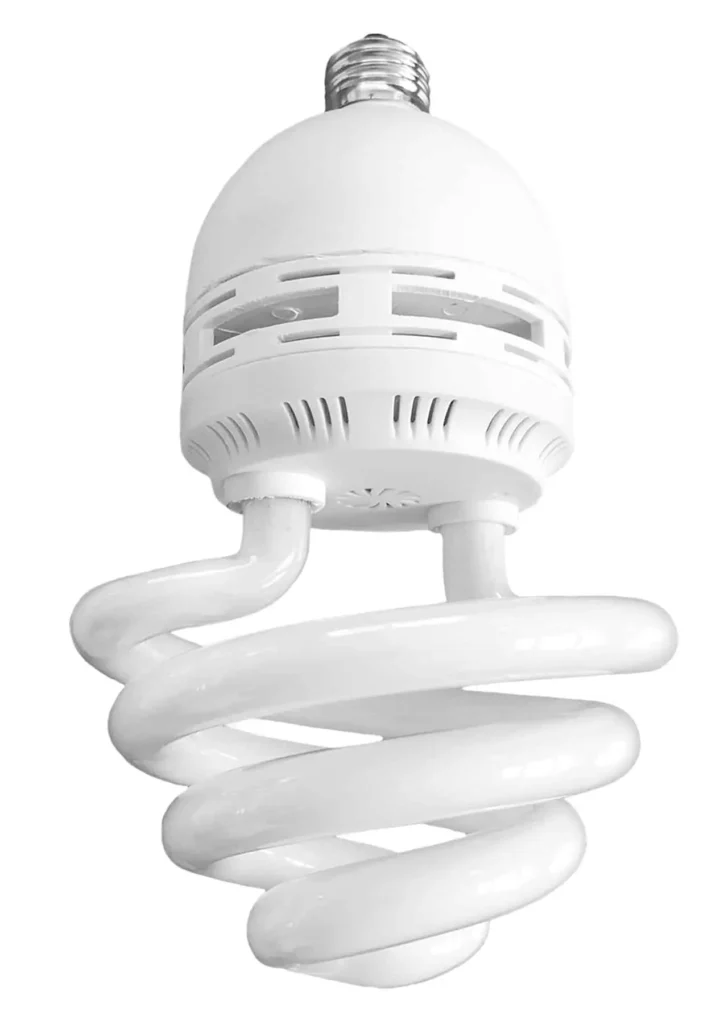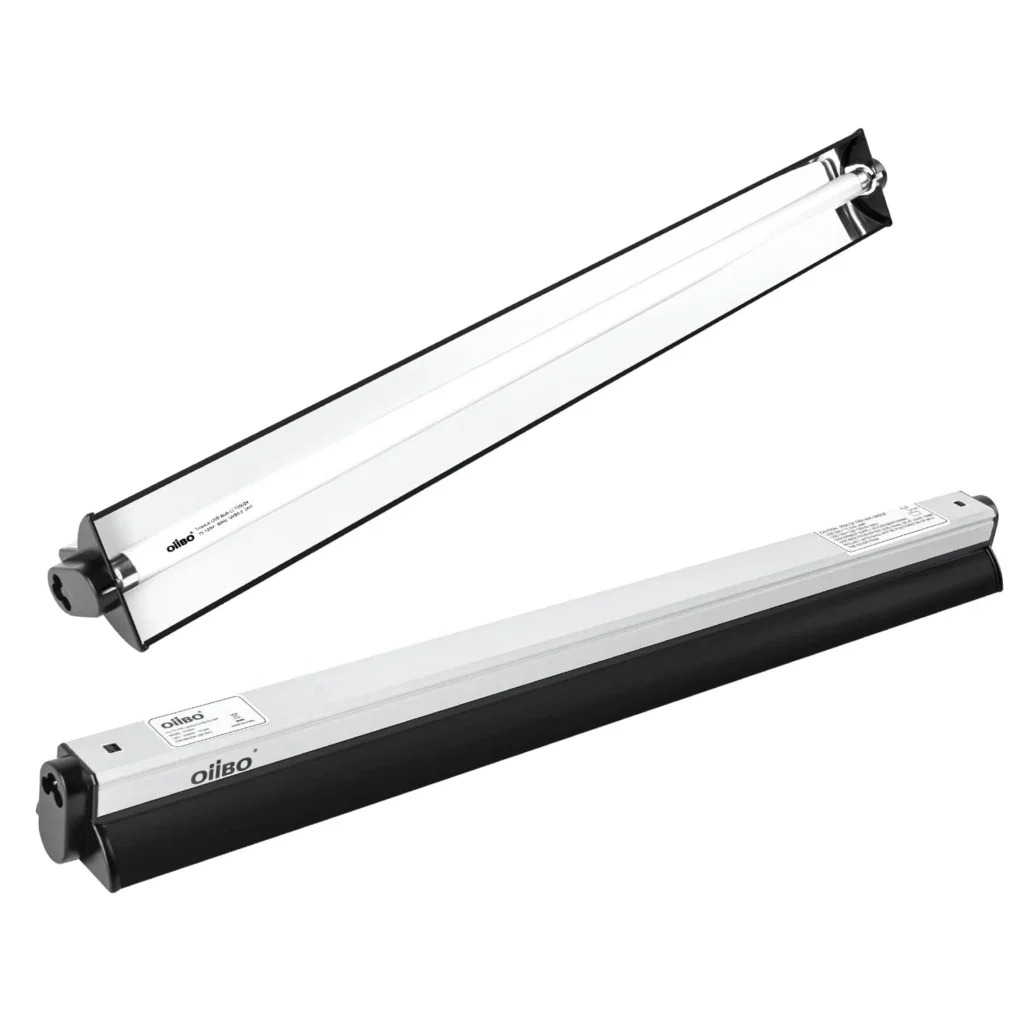
Temperature and Environment
Bearded Dragon Care Guide
Temperature and Environment Overview
TLDR (Too Long Didn't Read):
Without proper temperature, UV exposure, and humidity, your bearded dragon cannot perform essential biological functions, leading to severe health complications and even death in extreme cases. Their survival depends on the environment you provide—get it right.
Required Lights:
UVB
Heat
LED
Required Budget:
$150-$350
Priority Level:
High
The Importance of Temperature and Environment
Why does this matter?
Bearded dragons require a narrow temperature range for proper biochemical and physiological function. Without the right conditions, they can’t digest, move, or repair their bodies efficiently . In the wild, they move freely to find optimal temperatures and light; in captivity, their limited environment makes them entirely dependent on your setup. Failure to provide the correct conditions can severely harm their health.
Imagine how uncomfortable you are in a cold room without a jacket. For bearded dragons, inadequate temperatures don’t just cause discomfort—they prevent their bodies from functioning properly at all. The same can be said about proper light and humdiity conditions.
Our Temperature Recommendation
Basking Surface Temperatures
104°F+ (40°C+)
Warm Zone Surface Temperatures
86-91°F
(30-33°C)
Cool Zone Surface Temperatures
70-77°F
(21-25°C)
Nighttime Surface/Air Temperatures
59-68°F
(15-20°C)
Bearded dragons regulate their temperature by moving between different areas. In captivity, you must create a temperature gradient—offering a range from hot to cool—so they can self-regulate as they would in the wild.
What the science says about the right temperature gradient:
- Basking Spot: Surface temperatures of at least 40°C (104°F) directly under the basking lamp.
- Warm Zone: Surface temperatures of 30–33°C (86-91°F)in the middle of the gradient.
- Cool Zone: Surface temperatures around 23°C ± 2°C (70-77°F: room temperature).
- Nighttime Temps: Temperatures can drop naturally at night, but should not fall below 15°C (59°F).
The research behind this recommendation
TLDR:
Our temperature recommendations are based on rigorous scientific research—from wild observations to laboratory studies—not on anecdotal evidence. Proper temperatures are essential for your pet’s health and survival; unscientific advice can harm your bearded dragon.
Wild Bearded Dragon Temperature Preferences
Observations of wild behavior offer valuable insights into bearded dragons’ temperature preferences. A 2001 study found that these dragons maintain a stable body temperature of 32.9°C, even when air temperatures peak at 35°C and surfaces reach 37°C at the hottest part of the day. Another study showed that while their basking periods shorten in hotter weather, their preferred body temperature remains close to 36.3°C.
From this, we know:
- Bearded dragons adjust their behavior to regulate their internal temperature—provided they have access to a temperature gradient.
- In the wild, they strive to maintain a body temperature between 32°C and 36°C.
Lab Research Temperature Preferences
Laboratory research further validates the temperature preferences observed in the wild. A study that provided bearded dragons with full temperature freedom , found that bearded dragons will attempt to keep an internal temperature between 31.7°C and 38.2°C with a mean of 34.7°C. This will vary depending on their thermal conditions and current needs. These preferences closely align with those observed in wild populations.
Determining basking temperatures:
Based on both wild observation and laboratory research, we know bearded dragons will seek to maintain an internal body temperature in the mid-30s °C—occasionally going higher and often lower during cool nights. So how do we determine the best surface and air temperatures in our enclosure to enable proper temperature regulation?
Surface temperatures will be our primary focus, as they correlate strongly with the body temperatures of wild bearded dragons. Your dragon’s internal temperature will closely match that of the surfaces they are on.
We cannot simply use ideal body temperatures in place of basking surface temperatures. A basking location is used by animals to raise their body temperatures, not maintain them. Therefore, it needs to be a few degrees warmer than a dragon’s ideal temperature so they can warm up quickly when desired. Given that nighttime temperatures will not drop as low as they do in the wild, a surface temperature of 40°C should be sufficient. This value is selected for two reasons:
- Laboratory research suggests bearded dragons don’t voluntarily place themselves in areas warmer than 40°C. Granted, the starting body temperatures of these animals were not recorded, so it is possible that animals with very cool internal temperatures would find areas over 40°C acceptable. This is unlikely to be common for captive animals.
- The mean ground surface temperature in a study analyzing the basking behavior of wild bearded dragons was 37.6°C. While the highest recorded value was 58.9°C, such extreme temperatures are likely overkill considering the smaller temperature swings inside a captive enclosure.
While you can, in theory, go as high as 45°C, you must consider the impact on the rest of the enclosure’s temperature. In a small space, having a basking spot this hot can easily disrupt the overall temperature balance.
The air temperature of the basking spot is less critical, given that surface temperatures have a greater influence on your animal’s internal temperature. We would expect the air temperature to be a few degrees cooler than the surface temperature. It’s a good idea to check and ensure they are within 5–10°C of the surface temperature.
Determining Warm Temperatures
Here, the ideal range is around 30°C–33°C, aligning with the bearded dragon’s preferred internal temperature. This allows the animal to maintain a stable, and close optimal temperature when needed. As before, surface temperatures matter more than air temperatures.
Determining Cool Temperatures
If your dragon gets too hot, it needs a way to cool off. Fortunately, bearded dragons are well equipped for this. A study on their thermoregulation behaviors found that temperatures of 20–25°C on the cool side of a thermal gradient allow the animal to cool down quickly when needed. Therefore, a surface and air temperature of around 23°C should be sufficient for cooling, without lowering daytime temperatures excessively. This is roughly room temperature.
Night Time Temps
In the wild, bearded dragons experience dramatic day-to-night temperature swings. They have been observed in areas where temperatures drop below 10°C at night. Based on this, some temperature drop at night is likely a good idea. Most US homes cool down at night already, so we don’t think it makes sense to stress over an exact number here. Ensure all heat fixtures are off (unless your home drops below 10–12°C at night, in which case you’ll want to provide lightless supplemental heating), and let the enclosure cool naturally.
Caution with ’Steep’ Gradients
As explained, bearded dragons are well equipped to regulate their body temperature across a range of environments. However, they struggle with one condition: a steep temperature gradient. This occurs when temperature changes too rapidly over a short distance, forcing the animal into positions where different parts of its body experience different temperatures. This disrupts proper thermoregulation and increases energy expenditure as they must move more frequently to adjust.
To prevent this, enclosures must be large enough to provide a gradual temperature transition. A small enclosure combined with excessive basking temperatures can create a steep gradient. In theory, a larger enclosure allows for a hotter basking spot, but in a standard 4x2x2 setup, recommendations exceeding 45°C can be problematic.
What a steep temperature gradient looks like:
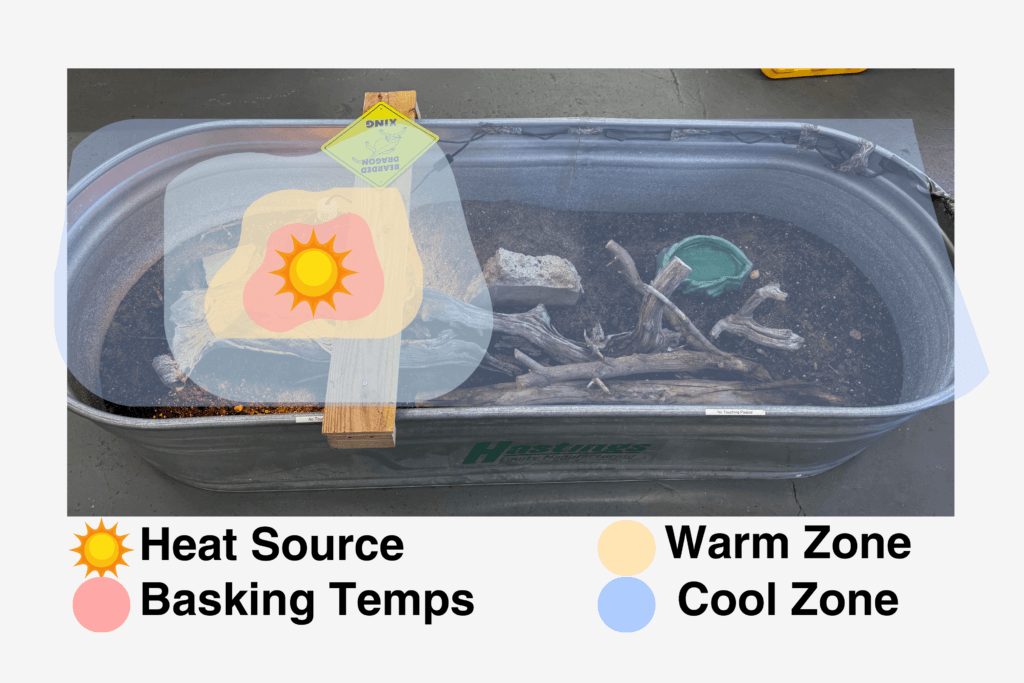
Compared to a good temperature gradient:
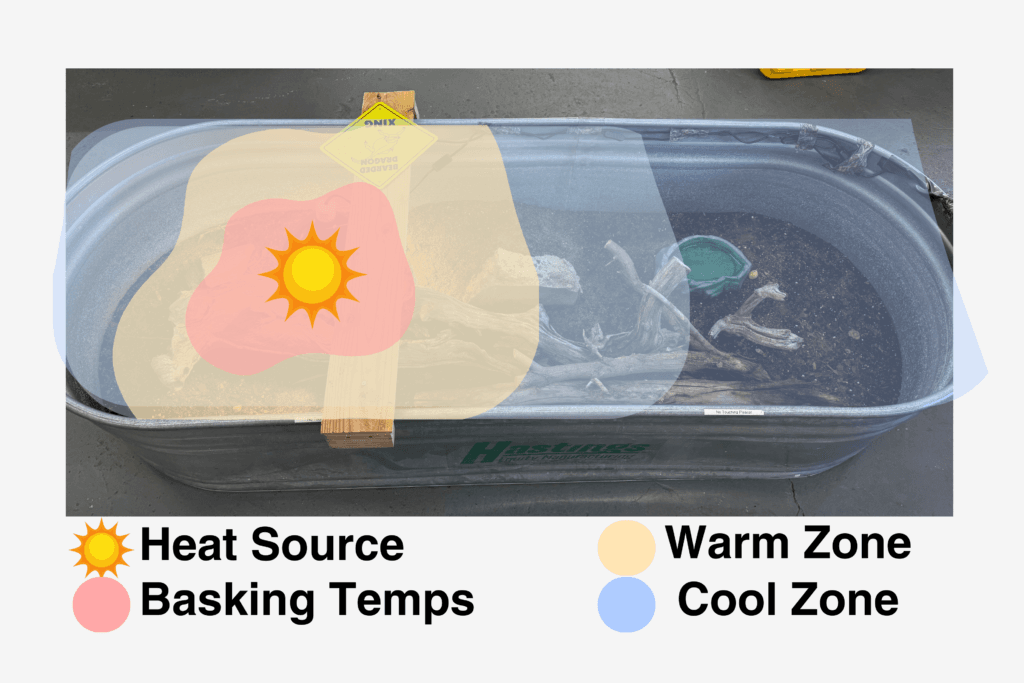
Additional lighting - UVB and visible light
TLDR:
You NEED a UVB, and very likely supplemental LED lighting
Like many living things, bearded dragons are very reliant on the sun’s various light wavelengths. We need to replicate these same wavelengths in captivity so their bodies are able to function correctly.
As a result we need two additional lights: UVB and an additional visible light source.
Why we need other lights - The science
As a refresher from high school science, the sun produces:
- Visible light that regulates day/night cycles
- Heat that warms objects (in wavelengths such as IRA and IRB)
- Ultraviolet radiation, which drives essential chemical processes
Traditional heat lamps emit visible light and infrared wavelengths for warmth but do not produce ultraviolet radiation—an essential component for bearded dragons’ biological function. To support their health, we must replicate the sun as closely as possible by adding supplemental lighting.
- More visible light to match the intensity of natural sunlight. This can be achieved with LED light bars. While reptile-specific options exist, a simple Google search will reveal many affordable, bright alternatives. Aim for a color temperature of 5000K–6500K to mimic natural daylight.
- A light source that produces UVA and UVB. These are commonly sold as UVB bulbs, but they also emit UVA.
The importance of UVB
Understanding the importance of UVB for captive bearded dragons requires a technical grasp of reptile physiology and biochemistry. To keep this accessible, we’ll simplify key points:
- In most reptiles, low vitamin D levels lead to serious diseases, particularly in bearded dragons. These conditions are collectively known as Metabolic Bone Disease (MBD).
- MBD is linked to calcium deficiency, causing severe and difficult-to-treat symptoms. Without sufficient vitamin D3, reptiles cannot absorb calcium from their diet, leading to MBD and related issues.
- In bearded dragons, vitamin D levels are primarily determined by UVB exposure. Many mistakenly believe dietary supplementation can replace this, but research shows it is far less effective than proper UVB exposure.
Simply put, without UVB exposure, bearded dragons cannot absorb calcium properly. Since calcium is crucial for bone health, muscle function, and even heart activity, a deficiency leads to devastating health consequences. MBD is one of the most common and complex diseases in captive reptiles. If you care about your pet’s well-being (and avoiding costly treatments), proper UVB lighting is non-negotiable.
How to select a UVB Bulb
Due to the critical role of ultraviolet light in bearded dragon health, we recommend using a UVB bulb from a reputable supplier. Arcadia and Zoo Med are widely respected in the reptile community. Start by checking their websites to determine the best bulb for your setup, then shop around for the best price and delivery options.
As a general recommendation, the ReptiSun 10.0 T5 Linear works well for most setups when positioned 7–8 inches above the basking area. We apologize for the lack of a one-size-fits-all recommendation, but the ideal bulb depends on your enclosure size and lighting arrangement.
Linear UVB or Compact?
This is a topic of some debate. For those unfamiliar, UVB bulbs generally come in two forms:
- Linear-style bulbs: Long, narrow bulbs that look like this
- Compact-style bulbs: These resemble standard light bulbs
The main debate centers on whether compact bulbs provide enough UVB over a large enough area to be beneficial. There is no conclusive research on this. However, based on wild bearded dragon behavior, UVI levels are most critical in basking locations. Additionally, UVB output from modern bulbs drops off dramatically with distance. Since basking spots are typically elevated, both compact and linear bulbs provide minimal UVI outside the basking area.
A linear bulb likely creates a more gradual UVI gradient, which is ideal. In nature, UV exposure varies, so replicating this in captivity makes sense.
Based on this, we cautiously recommend a linear-style bulb over a compact one. However, we acknowledge that experienced reptile keepers successfully use compact bulbs, particularly for species less dependent on UVB than bearded dragons.
What is non-negotiable is the use of UVB lighting. This is not an argument against its necessity—only a discussion on optimizing its delivery.
A practical guide to achieving the right temperatures
Selecting, purchasing, and setting up heat lamps can feel overwhelming. Let’s simplify the process so you can be confident everything is set up correctly.
Before proceeding, ensure you’ve completed the basic enclosure layout. Adjustments can be made as you fine-tune temperatures, but having a rough setup in place will make the process smoother.
Example Supply List
Every setup is unique, and you may need additional materials beyond what’s listed here. However, these are the essential components:
- Infrared temperature sensing gun
- Digital air and humidity monitor
- 1–2 halogen heat bulbs (100W)
- 1–2 light fixtures (100W+; dimmable options recommended)
- 1 UVB-emitting bulb, such as the ReptiSun 10.0 T5 Linear
- 1 UVB bulb fixture
- 1 bright LED light bar
Depending on your ambient temperatures and enclosure size, you may also need:
- Ceramic heat bulb (75W–100W) or heat panel
- Ceramic heat fixture
Setting up your heat lamps
Basking Surface Temperatures
104+ F (40+ C)
Warm Zone Surface Temperatures
86-91 F (30-33 C)
Cool Zone Surface Temperatures
70-77 F (21-25 C)
Nighttime Surface/Air Temperatures
59-68 F (15-20 C)
1.
Set up your heat bulb directly above your planned basking location
Begin by setting up your halogen heat bulb (or bulbs depending on your setup) directly above your planned basking location.
The height you start with isn’t all that important. Just be sure your pet isn’t in the enclosure while you are working on getting the temperatures set up.
2.
Wait and take surface temperature
Wait a couple of hours or so, and check the surface temperature with your infrared thermometer gun.
3.
Adjust basking bulb as required
The primary way we can control the resulting temperature in the basking location is how far away the bulb is. You can also use a dimmer function if your light has one, but due to the way these lights generate infrared radiation (what we feel as heat), you want to use this as a last resort.
If it’s too cool, adjust either the height of your basking location or light to move them closer together or further away if too hot. This process requires a bit of trial and error to get it just right.
If you find that you cannot adjust the height any further without risking your pet coming into direct contact with the light, you will need a higher wattage bulb or an additional bulb altogether.
4.
Determine if supplemental heating sources are required
With the basking spot taken care of, you can begin to assess if you’ll need additional heat sources. Check the surface temperature toward the middle of the enclosure (if you’ve placed the basking spot to one side) or wherever you have decided your warm location will be. If the surface temperature is not appropriately warmed by your basking lamp, you will need to add a heat source. The simplest method is typically a ceramic heat bulb. Follow the same technique you used for the basking setup until you find a stable surface temperature within the suggested range.
5.
Check the cool temperatures
Finally, check the cool side of the enclosure to ensure it isn’t too warm. If it is, you may need to move your basking and warm locations farther toward one side. It is also a good idea to ensure you have enough ventilation on that side.
A note on air temperatures
As mentioned earlier, air temperature is less critical than surface temperature, as a bearded dragon’s internal temperature is more closely linked to surface heat. However, it’s still important to check air temperatures to ensure they remain within a safe range.
To do this, place an air temperature reader in different areas of the enclosure, record the readings, and confirm they meet these guidelines:
- Do not exceed 35°C in the basking location.
- Are not below 23°C in the cool area.
- Are within a few degrees of the surface temperature in the cool area.
Extreme air temperatures often indicate poor airflow or an improper lighting setup. If temperatures seem off, first recheck surface temperatures to ensure they are stable.
Setting up your LED and UVB bulb
1.
Mount the LED
Setting up an LED to add additional visible light to your enclosure is very straightforward. Simply mount the light fixture at the top of the enclosure. It’s a good idea to ensure this bulb covers at least 75% of the enclosure. Just be sure the light is far enough away to spread light across the entire enclosure and is not overly focused.
2.
Mount UVB Bulb
Setting up UVB lighting is more complex. The goal is to achieve a UVI of around 4–5 at the basking location, gradually decreasing to zero on the cool side of the enclosure. It’s generally best to follow manufacturer guidelines, as reputable brands provide setup instructions on the packaging.
Keep in mind that materials like mesh and glass can block some or all UV light. Most manufacturers offer different mounting height recommendations based on whether the light is inside or outside the enclosure.
Without a way to measure UVI, setup involves some guesswork. Even when following manufacturer recommendations, actual UVI levels can vary. For this reason, we recommend investing in a UV Index Meter—though they can be expensive. UV test cards are a cheaper alternative, but we cannot verify their accuracy. As with any measurement, unreliable data can be as harmful as no data at all.
Humidity
Low Humidity Range
20-30%
Max Humidity Range
50-60%
Humidity levels in a bearded dragon’s natural habitat fluctuate throughout the day. Overnight and in the early morning, humidity may reach 60%, while during the day, it can drop below 20%. The best approach is to maintain a general humidity level of 30–40% throughout most of the enclosure. Since most US homes have humidity levels of 40–50%, this range is easily achievable.
Humidity near the basking area will naturally be lower due to heat sources reducing relative humidity. This is expected and not a concern. However, if humidity in the cool zone drops below 30%, lightly misting the substrate can help.
Temporary humidity spikes won’t cause issues, but prolonged levels above 60% are not recommended.
Allowing for lower humidity near the basking area and higher levels on the cool side creates a humidity gradient, similar to a temperature gradient. This likely mimics the microhabitats wild bearded dragons utilize throughout the day.


